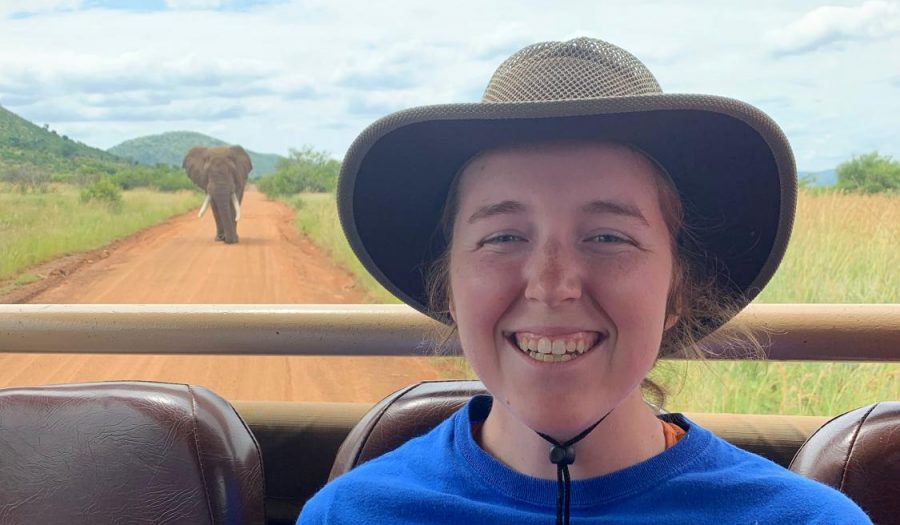Student studies South African animal agriculture
Megan Kellen, junior animal science major, went to South Africa during her spring break with the College of Agriculture, Food and Environmental Sciences. The trip taught 15 students and two faculty members about South African agriculture.
March 19, 2019
When I came to SDSU, studying abroad was always in the back of my mind. Last fall, I attended the study abroad fair to learn about the options. During this fair, I learned a professor I previously took a course with, Michael Gonda, would be leading a spring break trip to South Africa the through College of Agriculture, Food and Environmental Sciences. I talked to him about what this trip would cover and realized it was definitely something I was interested in.
I decided to go to South Africa because I was interested in the animal agriculture there. It’s not a typical spring break location and a week abroad sounded like a good amount of time.
The week in South Africa arrived sooner than I thought it would after meeting in class every week and learning about the different aspects of agriculture in South Africa.
We flew out of Sioux Falls the Friday before spring break. Then after another 16 hours on a plane from Atlanta, we landed in Johannesburg South Africa Saturday afternoon, South African Standard Time. The next week was full of many adventures.
A few of our stops included the Ann Van Dyk Cheetah Center, Trekpad Safari, various farms, the Apartheid Museum, Pilanesberg National Park and Game Reserve.
The Trekpad Safari was a highlight for many students. We were able to help the Trekpad Safari staff dart and move some of their wild game. The staff moves their males around in order to prevent fighting and inbreeding.
Trekpad also raises Afrikaner cattle and various crops. Afrikaner cattle are indigenous to South Africa and are well known for traits that help them survive in the challenging climate. It was interesting to see how Trekpad is able to raise cattle in the mountains on terrain much steeper than the plains of the Midwest.
Another highlight of our trip was the Pilanesberg National Park. During this visit, our group saw zebras, giraffes, wildebeests, warthogs, impalas, elephants and more.
After a week of learning about agriculture, it was a nice change of pace to learn about the wildlife of South Africa. Our week came to an end much sooner than any of us wanted it to, and we arrived back in Sioux Falls just before midnight Sunday, March 10.
Throughout the week, I learned a lot about agriculture in South Africa. We visited different producers, some who have been established as producers for some time and others who are just starting in agriculture.
One of the most interesting parts of the trip was learning about how these producers started out. Some of them recently had full time jobs in the city and decided to switch careers and raise livestock. As we visited with different producers, something kept sticking out to me.
I realized that after I graduate with a bachelor’s degree in animal science, I will still have so much to learn about animal agriculture here in the United States and globally.
For instance, if there are practices that have worked for us, that doesn’t mean they will work everywhere. As someone planning to be involved with agriculture in the future, it is important to respect and understand the different cultures around the world.
I am super grateful for my South African experience and the lessons I learned from it.
Megan Kellen is an animal science major at South Dakota State University and can be reached at [email protected]

























Connie Ball • Mar 24, 2019 at 9:32 pm
Megan, your story was so interesting. You were fortunate to have such an opportunity. I know you’ll use it ways you can’t imagine. Great work!